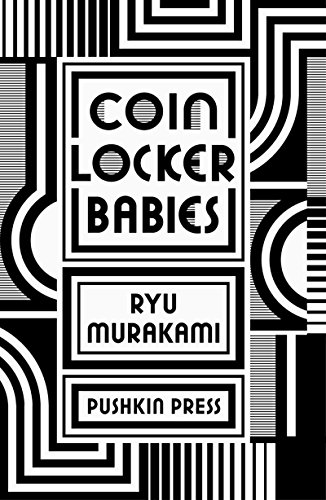
Coin Locker Babies is really hard to summarise. It explores the lives of two boys abandoned by their mothers at birth in coin lockers in Yokohama, Japan. They find each other at the Cherryfield Orphanage and though they are very different, their origins force them into an intense and complex bond of brotherhood that seethes with an undercurrent of need, fear and violence.
The novel seems to begin as one thing and then part way through becomes something else. This isn’t to say that Coin Locker Babies lacks an overarching narrative drive, that’s not quite what I mean, rather that it was hard to anticipate where the plot might turn and while this can be an exciting feeling, I confess to being frustrated at times by where the boys and their lives seemed to be going. But, and this is crucial, it is a hard novel to forget.
Scenes have stayed with me. The obsessions of the two boys – Kiku for high jump and Hashio for sound – were vividly explored, described and unravelled. There were immensely compelling images, ideas and settings. One of these is the abandoned mining town in the small island off Kyushu that the boys are taken to when they are adopted. They are told to avoid the abandoned mining town but of course they ignore the warnings and have quite a few scrapes with the wild dogs in among the deserted, barron streets, houses and shops. The town also seems to mirror an invented town that Hashio once made from scraps of rubbish in the orphanage (another arresting image).
Modern living, its interest in money and fame is shown to be hollow and exploitative. Humans to be a virus that ought to be destroyed. Love interest, Anemone, is a model whose vacuous day job is contrasted by her love for her pet crocodile. She modifies a whole area of her flat to create the tropical heat and river environment of his natural habitat.
I don’t want to talk through the plot, it would spoil the book and create an incredibly long review. Needless to say the characters of Kiku and Hashio are compelling and the idea of what it means to love and be loved is intently examined. The beat of a mother’s heart, the beat of breath, wave, mother earth, resounds through the boys’ bodies and minds questioning how best we can love each other and the world.
It’s a wild and crazy read that takes in all ends of the social spectrum from social rejects, prostitutes, homeless people, to wealthy famous singers, business people and the humble normal individual along the way. We dive into mental institutes, prison and under the ocean. We explore the fallout of war and chemical experimentation. We witness environmental and social destruction and upheaval. We hear the anger and longing of the abandoned. I’m not entirely sure how much I liked it, but there’s no denying its energy and flare.
I’ll be reviewing Girl in the Walls by A. J. Griuse next.